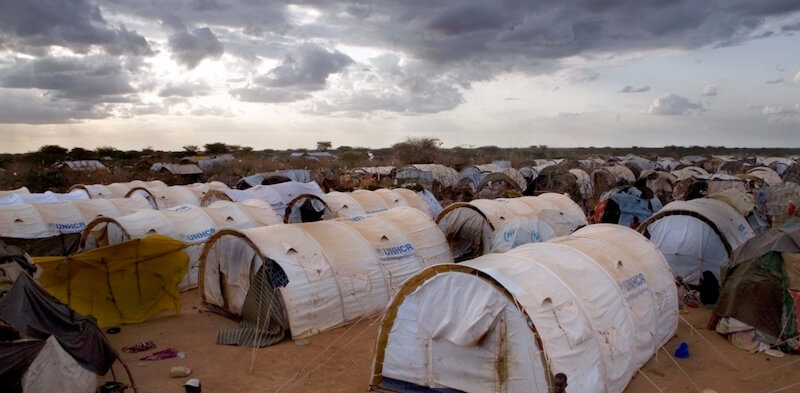
Around the globe, refugee camps provide sanctuary to 100 million displaced individuals. These camps serve as transient abodes, ensuring safety and basic provisions for people who have been coerced to abandon their homes due to violence, natural calamities, conflict, or persecution. Often, these camps are established by governments, NGOs, or international organizations like the UNHCR.
Refugee camps can be found worldwide, with a significant number in developing nations hosting large refugee populations. As per the UNHCR, the world's largest refugee camp is Cox's Bazar in Bangladesh, accommodating over 900,000 Rohingya refugees who fled from Myanmar due to violence. Despite the Bangladeshi government's and humanitarian organizations' endeavors to ameliorate living conditions, refugees continue to struggle with overcrowding, inadequate sanitation, and limited access to basic amenities.
Other notable refugee camps include Dadaab in Kenya, sheltering over 200,000 refugees, and Zaatari in Jordan, hosting more than 80,000 Syrian refugees.
Hundreds of refugee camps are scattered around the world, a figure that fluctuates as new camps are erected and old ones are decommissioned. In 2021 alone, UNHCR reported 34 refugee camps in Kenya. Apart from these official camps, refugees often inhabit informal settlements with limited access to basic services.

Refugee camps are indispensable for individuals who have been displaced due to conflict or violence and are in dire need of a safe haven. These camps are intended to be temporary, safe spaces where individuals can access necessities like food, water, shelter, and healthcare until they can return to their homes or find a more permanent residence.
Despite their necessity, refugee camps are fraught with numerous challenges. One of the major problems is overcrowding, leading to issues like inadequate sanitation, lack of privacy, and increased risk of diseases.
Poor sanitation and lack of clean water are prominent problems that can lead to severe health crises and even fatalities, particularly among children and the elderly. The crowded conditions and inadequate sanitation contribute to the rapid spread of diseases such as cholera, typhoid, and diarrhea.
The lack of educational and job opportunities also poses a problem, hindering refugees' efforts to rebuild their lives and achieve self-sufficiency. Refugees, especially women and children, are often exposed to violence and exploitation. Additionally, the shortage of funds for refugee camps can further exacerbate the provision of basic services, leading to tension and conflicts over scarce resources.
Although refugee camps are critical for providing safety and basic services to millions, they are far from perfect solutions. Addressing the root causes of displacement and investing in sustainable solutions that empower refugees to rebuild their lives is crucial for the global community.
One solution is to recognize that some refugee camps should be regarded as permeant are as such an effort should be undertaken to develop infrastructure like proper sanitation facilities, clean water delivery systems and inhouse food production, which could be in the form as small footprint easily managed farms and gardens.
The adoption and deployment of Crop Circle Farms And Gardens would have an immediate impact provide nutritious produce at the point of use but the potential for agricultural training and education where people can learn to feed themselves and others. Crop Circle Farms LLC and Growing To Give, a nonprofit in Washington have teamed up to create such an imitative.
Ready to transform your land into a high-yield, sustainable farm? Let Crop Circle Farms design and build a custom, low-impact, and water-efficient farm tailored to your needs. Double your income and cut your costs in half! Contact Us
Help us expand our mission to revolutionize agriculture globally. We are seeking partners to implement Crop Circle Farms to feed people in need. Together, we can build scalable food production systems that save water, reduce costs, and feed thousands of people. Contact Growing To Give